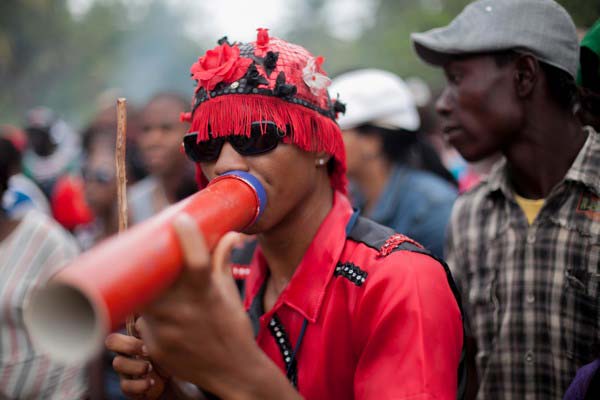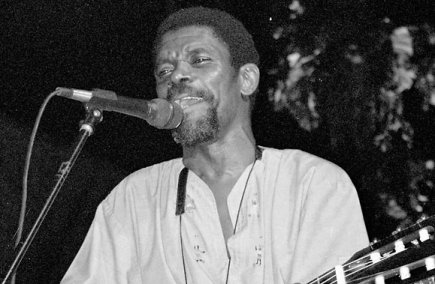Rara
In Catholic tradition, the seven days following Easter Sunday in any given year is called Easter Week. In Haitian tradition, rara, a brilliant and colorful music festival, takes place throughout this holy week. This genre is said to have begun in the 1700s, most likely in the latter part of the century, when French colonization was still strong but African-Haitian sugar plantation workers were riling up. In order to gain independence, Haitian slaves fought literally (during the Haitian Revolution) and culturally (through new art, music, and dance forms).

The first instance of rara reportedly took place on Easter Sunday in Saint Domingue, the historic hub for Affranchi social development. Some speculate that the lower-class and oppressed citizens of African descent organized and marched as troupes, parading through the streets with drums, horns, and singers belting in rich Creole. There are no known official documentations of these originating claims; instead, stories have been passed orally from generation to generation.
Elements of Rara

The vaksen: All rara music centers around a large set of cylindrical bamboo trumpets called vaksen. These impressive woodwind instruments may also be made of metal, making them more boisterous brass instruments. The vaksen plays a repeating rhythm in a monotonous, trance-like way, generally at a tempo fast enough to move one’s body to. This pattern is normally called a hocket; sound is produced when a vaksen, stimulated by a steady stream of air, is struck by a stick carried by the wielder.
Percussion: In a normal parade, drums, maracas, güiras, and other types of percussive objects like bells and cans are used to add to the overall rhythm and affect produces by the centerpiece vaksen. Güiras are a scrape instrument that originated in the Dominican Republic but eventually made their way to Haiti. They produce a particularly tinny and distinctive noise.
Horns: In modern times, different brass instruments like saxophones or trumpets are often blown by random members of the crowd in attendance. This raises the level of cacophony considerably, and ultimately makes the festival either more impressive or more intrusive.
The people: Nowadays, attendees dress (or paint themselves) vibrantly when attending a festival and often bring big and visually loud objects, like flags or batons. Often, professional twirlers show up to these gatherings.
All songs performed during a parade are strictly done so in Haitian Creole. Lyrics are generally intended to celebrate the African half of Mulatto ancestry, or are political in nature – because the custom was originally used to predate independence struggles, difficult topics like poverty or social disparities are often chanted. This mindset of delivering a distinct message throughout Haitian music is called “voye pwen,” which in English literally means “sending the point.” Voye pwen aims to sing around a controversial topic, encircling it in blame but not actually accusing an issue outright.
Modern Times
Today, rara festivals often start on Ash Wednesday and have their finale during Easter Weekend. The practice is still very much attended and held in high esteem amongst Haitians. Amongst the different kinds of folk music in Haiti, it is still the most widely-practiced, anticipated, and celebrated forms. An exported version of the parade is also very popular in the Dominican Republic – there, it is called “gagá.”
Listen to Rara

One notable artist who has recorded Rara for the masses is folk singer Manno Charlemagne. Charlemagne was a political activist who performed in both French and Haitian Creole. Throughout the late 1900s, his work and popularity got him both ousted from Haiti and later elected as the mayor of the capital city, Port-au-Prince. Perhaps his greatest work is his opus, Les Inedits de Manno Charlemagne.
To hear raw, historic Rara music, please find the Smithsonian’s Rara in Haiti: Gaga in the Dominican Republic, recorded in 1978 as a cultural documentation album.
